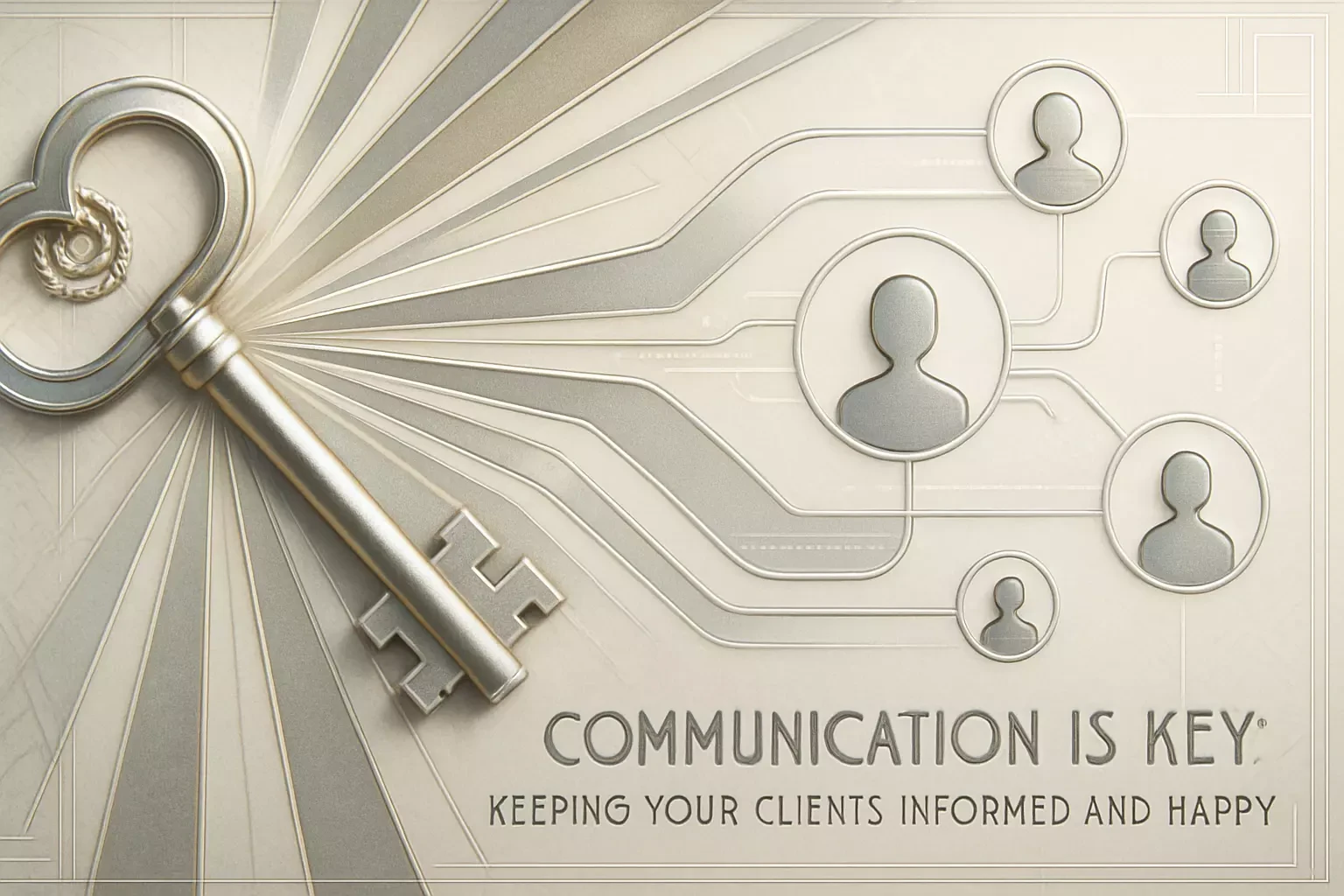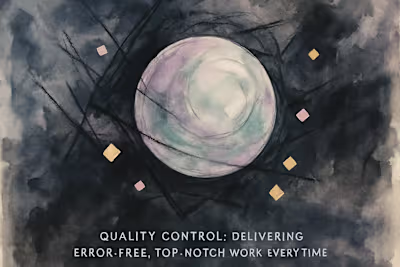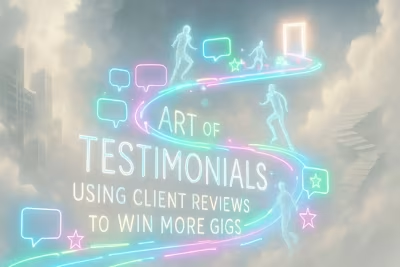Communication Is Key: Keeping Your Clients Informed and Happy

Communication Is Key: Keeping Your Clients Informed and Happy
Establishing Communication Protocols from Day One
Create a Communication Plan
Choose the Right Channels for the Right Message
The Art of Proactive and Transparent Updates
Implement Regular Progress Reports
Communicate Delays and Challenges Immediately
Active Listening and Clarifying Needs
Practice Active Listening
Ask Clarifying Questions
Leveraging Tools for Seamless Communication
Utilize Shared Project Management Systems
Master Video Conferencing and Screen Sharing
Conclusion
References
Communication Is Key: Keeping Your Clients Informed and Happy
Great virtual assistants know that communication is more than just sending emails. It's the foundation of trust, clarity, and client satisfaction. When you master how to communicate effectively, projects run smoothly and relationships flourish. This skill complements excellent time management and is crucial for delivering high-quality work.
If you're a business looking to hire a virtual assistant, prioritize candidates who demonstrate exceptional communication abilities. The difference between an average VA and an outstanding one often comes down to how well they keep you informed and engaged throughout your working relationship.
Establishing Communication Protocols from Day One
The key to avoiding miscommunication is setting clear expectations from the very beginning. This proactive approach builds a strong foundation for trust and efficiency. When both parties know what to expect, there's less room for frustration or misunderstandings down the road.
Think of communication protocols as your roadmap for the entire client relationship. Just like you wouldn't start a road trip without knowing your destination, you shouldn't begin working with a client without establishing how you'll stay connected.
Create a Communication Plan
During onboarding, sit down with your client and discuss communication preferences. This isn't just a casual chat – it's a strategic conversation that sets the tone for your entire working relationship. Talk about preferred communication channels, expected response times, and how often they'd like updates.
Document everything you discuss. Create a simple communication agreement that outlines:
Which channels you'll use for different types of messages
Your working hours and availability
How quickly you'll respond to messages
When and how you'll provide project updates
Emergency contact procedures for urgent matters
This document becomes your reference point whenever questions arise about communication. It eliminates the guesswork and ensures both you and your client are on the same page from day one.
Choose the Right Channels for the Right Message
Not all messages are created equal. A quick question about a deadline doesn't need a formal email, and a detailed project proposal shouldn't be sent via text message. Understanding which channel works best for different types of communication makes your interactions more efficient.
Use email for formal updates and documentation. This creates a paper trail and gives clients something to reference later. Important decisions, project summaries, and anything involving contracts or agreements should go through email.
For quick questions and day-to-day communication, messaging apps like Slack or Microsoft Teams work perfectly. These platforms allow for instant communication without the formality of email. You can share quick updates, ask clarifying questions, or send a friendly check-in.
Video calls are your best friend for in-depth discussions. When you need to brainstorm ideas, review complex projects, or build rapport with a new client, nothing beats face-to-face interaction. Even if it's through a screen, video calls help you pick up on non-verbal cues and create stronger connections.
The Art of Proactive and Transparent Updates
Keeping clients in the loop is essential for building confidence. When clients don't hear from you, they start wondering. Are you working on their project? Did you forget about that deadline? Is everything okay? Proactive updates prevent these worries and show that you're in control.
Being proactive means reaching out before your client has to ask. It's about anticipating their needs and addressing concerns before they become problems. This approach transforms you from a service provider into a trusted partner.
Implement Regular Progress Reports
Consistency is your secret weapon when it comes to client updates. Whether you send daily summaries or weekly reports, stick to a schedule your client can count on. These updates don't need to be lengthy novels – a simple bullet-point list often works best.
Your progress reports should include:
Tasks completed since the last update
Current projects in progress
Any roadblocks or challenges encountered
Plans for the next reporting period
Questions or items needing client input
Keep your reports concise but comprehensive. Clients are busy people, and they appreciate updates they can scan quickly while still getting all the important information. Use clear headings and bullet points to make your reports easy to digest.
Consider creating a template for your reports. This saves you time and ensures you never forget important details. Plus, clients appreciate the consistency and professionalism of well-formatted updates.
Communicate Delays and Challenges Immediately
Nobody likes delivering bad news, but waiting only makes things worse. If you anticipate a delay or encounter a problem, inform your client as soon as possible. The earlier you communicate issues, the more options everyone has for finding solutions.
When communicating challenges, always come prepared with solutions. Don't just dump problems in your client's lap. Instead, explain the situation, outline potential solutions, and recommend your preferred approach. This shows initiative and problem-solving skills.
For example, instead of saying "I can't meet the deadline," try: "I've encountered an unexpected issue with the software that's adding extra time to the project. I can either push back the deadline by two days or bring in additional help to stay on schedule. What would you prefer?"
Being upfront about challenges demonstrates professionalism and accountability. Clients respect honesty and appreciate being kept in the loop, even when things aren't going perfectly.
Active Listening and Clarifying Needs
Effective communication is a two-way street. You can send all the updates in the world, but if you're not truly listening to your client's needs, you're only doing half the job. Active listening and asking the right questions prevent assumptions and costly revisions.
Many communication breakdowns happen because we think we understand what someone wants, but we're actually operating on assumptions. Taking the time to truly listen and clarify saves everyone time and frustration in the long run.
Practice Active Listening
When a client is speaking, give them your full attention. This means closing other browser tabs, putting your phone aside, and focusing completely on what they're saying. Active listening isn't just about hearing words – it's about understanding the meaning and emotion behind them.
Show that you're engaged by:
Taking notes during conversations
Asking follow-up questions
Paraphrasing what you've heard
Acknowledging their concerns
Avoiding interruptions
After a client explains something, summarize their points back to them. Say something like, "Let me make sure I understand correctly. You need me to..." This technique confirms your understanding and gives clients a chance to clarify if needed.
Pay attention to tone and emotion, not just words. Sometimes what a client doesn't say is just as important as what they do say. If they seem hesitant or uncertain, dig deeper to uncover their real concerns.
Ask Clarifying Questions
Never assume you know what a client wants. If instructions are unclear or a request seems ambiguous, ask for clarification. It's better to ask questions upfront than to spend hours working on the wrong thing.
Good clarifying questions include:
"Can you give me an example of what you're looking for?"
"What's the main goal of this project?"
"Who is the target audience for this?"
"What does success look like for this task?"
"Are there any specific requirements I should know about?"
Don't worry about seeming inexperienced by asking questions. Clients appreciate VAs who take the time to understand their needs fully. It shows attention to detail and commitment to getting things right.
Create a habit of confirming project details before you start working. Send a quick message outlining your understanding of the task and ask for confirmation. This simple step can prevent hours of wasted work and frustration.
Leveraging Tools for Seamless Communication
Modern tools can significantly enhance communication efficiency. They make it easier to stay connected and organized, especially when working remotely across different time zones. The right tools transform communication from a challenge into a competitive advantage.
Technology should enhance your communication, not complicate it. Choose tools that integrate well with your workflow and make information sharing effortless. The goal is to spend less time managing communication and more time doing great work.
Utilize Shared Project Management Systems
Tools like Asana, Trello, or Monday.com keep all project-related communication and files in one central place. This creates a single source of truth for both you and your client, eliminating the "where did I put that file?" moments.
These systems offer several advantages:
All project information lives in one place
Comments and discussions stay attached to specific tasks
File sharing is organized and searchable
Progress tracking is visual and intuitive
Notifications keep everyone informed
When setting up a project management system, keep it simple. Don't overwhelm clients with complex workflows or unnecessary features. Start with basic task tracking and add features as needed.
Train your clients on how to use these tools effectively. A quick screen-share tutorial can save hours of confusion later. Make sure they know how to assign tasks, leave comments, and track progress.
Master Video Conferencing and Screen Sharing
For complex discussions or tutorials, video conferencing tools like Zoom, Google Meet, or Microsoft Teams are invaluable. Face-to-face interaction, even virtual, builds stronger relationships and clearer communication.
Screen sharing is particularly powerful for:
Walking clients through processes
Reviewing work together in real-time
Troubleshooting technical issues
Presenting ideas or proposals
Training clients on new tools
Before important video calls, test your technology. Check your internet connection, audio quality, and lighting. Nothing disrupts communication flow like technical difficulties.
Keep video calls focused and productive. Send an agenda beforehand, start on time, and end with clear action items. Record important calls (with permission) so both parties can reference them later.
Conclusion
Communication is the backbone of successful virtual assistant relationships. By establishing clear protocols, providing proactive updates, listening actively, and leveraging the right tools, you create an environment where both you and your clients thrive.
Remember, great communication isn't about being perfect. It's about being consistent, transparent, and responsive. Start implementing these strategies one at a time. Pick the area where you struggle most and focus there first.
Your clients will notice the difference immediately. They'll feel more confident in your abilities, more satisfied with your work, and more likely to recommend you to others. In the world of virtual assistance, strong communication skills aren't just nice to have – they're essential for long-term success.
Take action today. Review your current communication practices and identify one area for improvement. Whether it's setting up a project management system or creating a communication plan template, small changes lead to big results. Your future self (and your clients) will thank you.
References
Like this project
Posted Jun 30, 2025
Effective communication is crucial for a successful VA-client relationship. Discover key strategies and tools to keep your clients happy, informed, and confident in your work.










